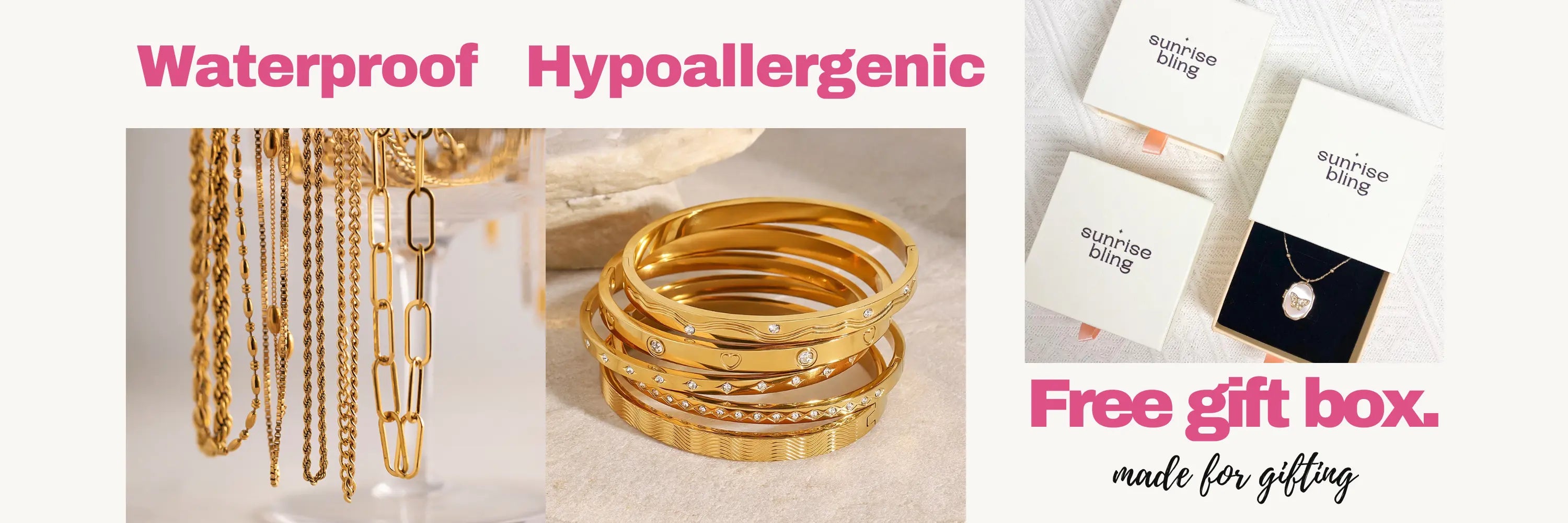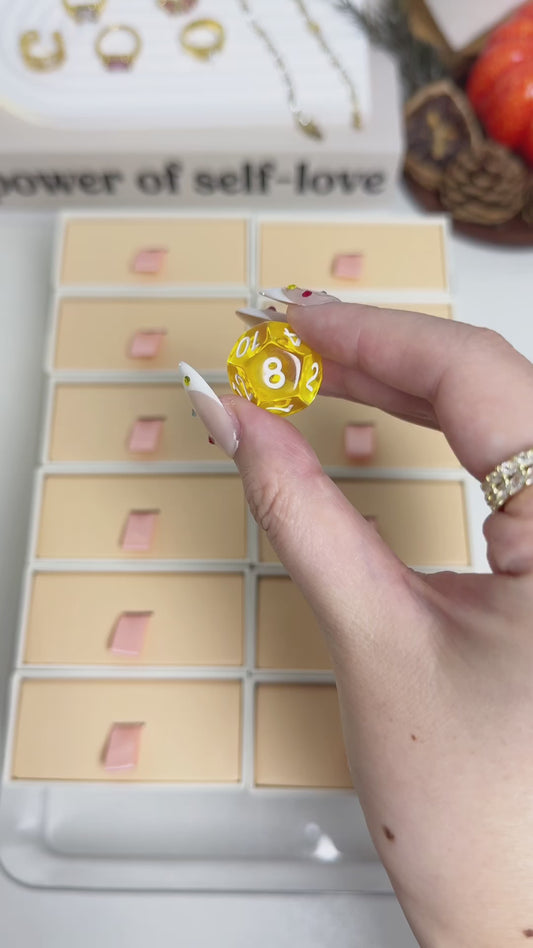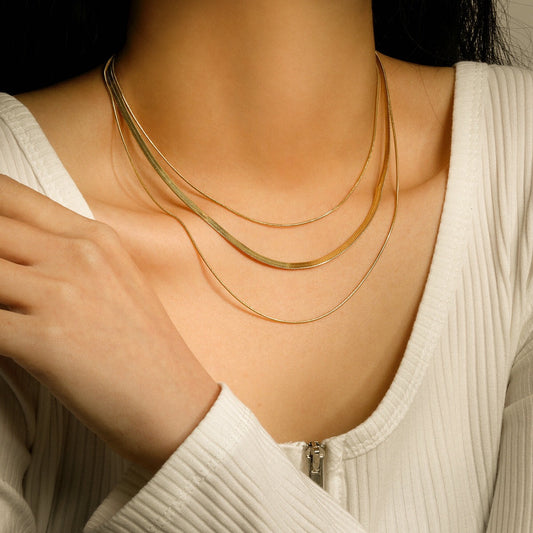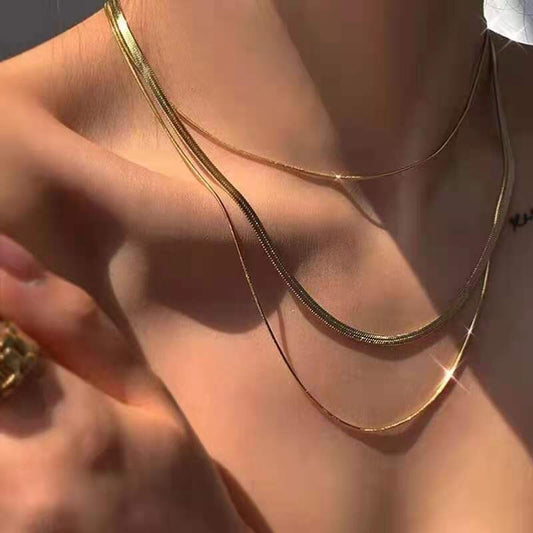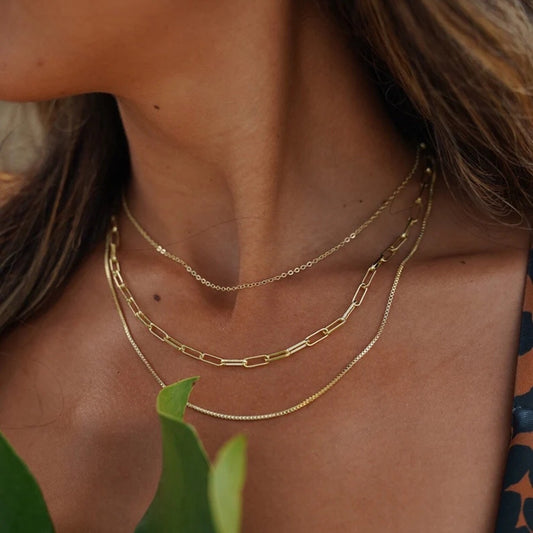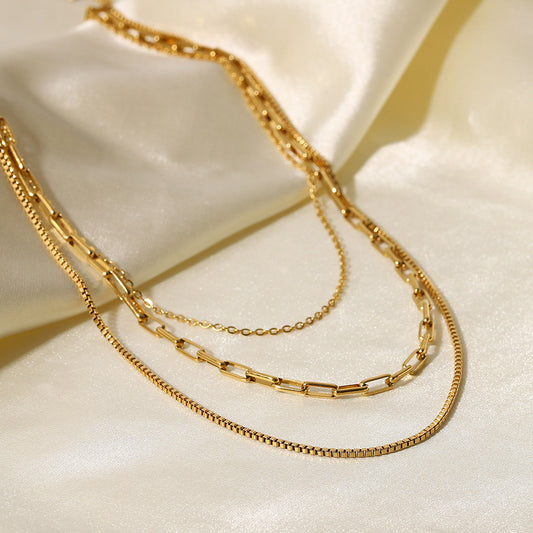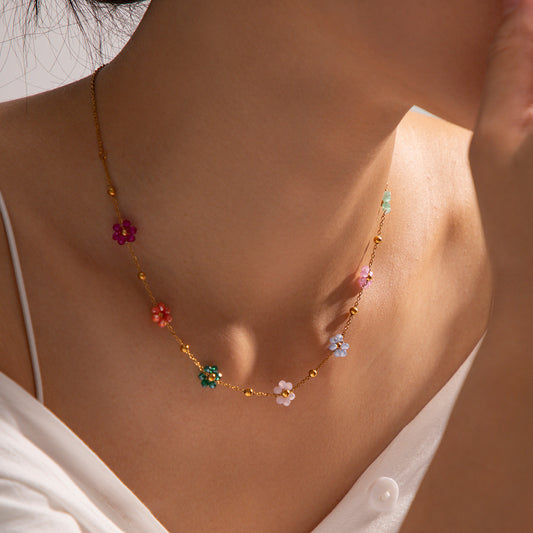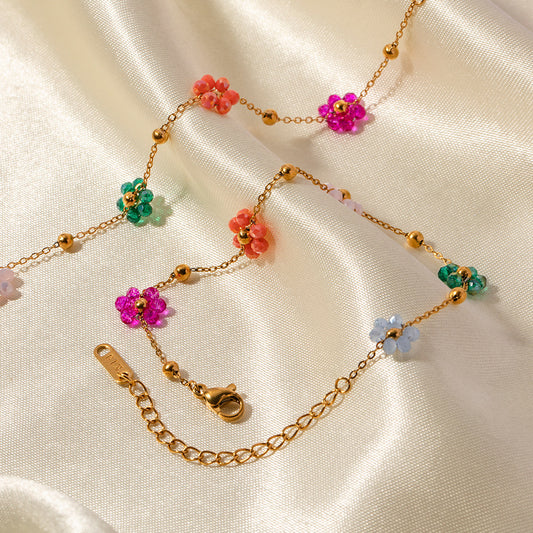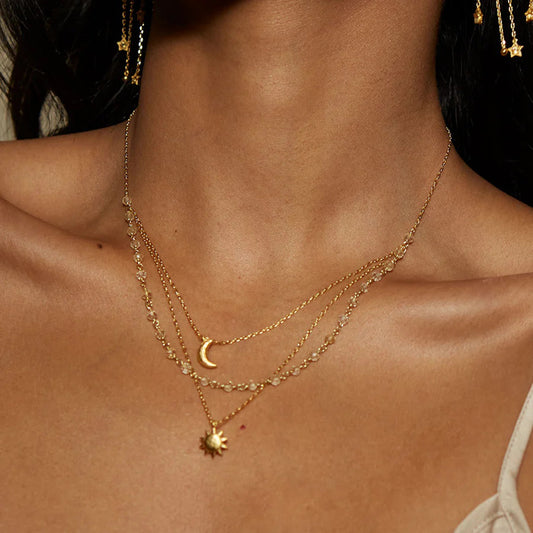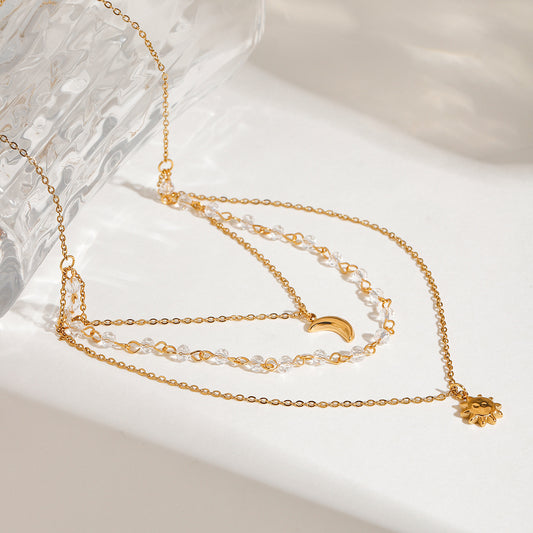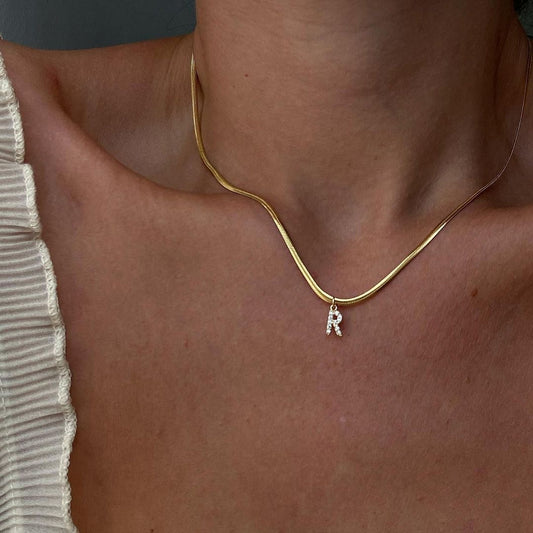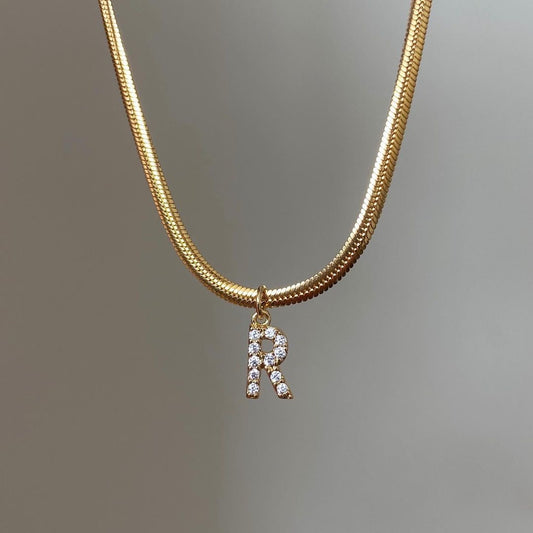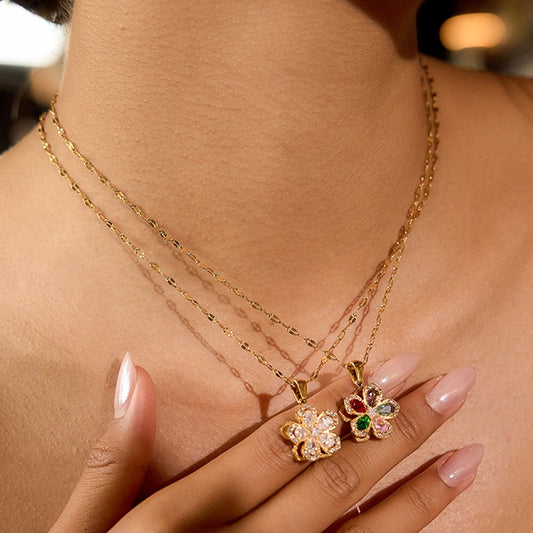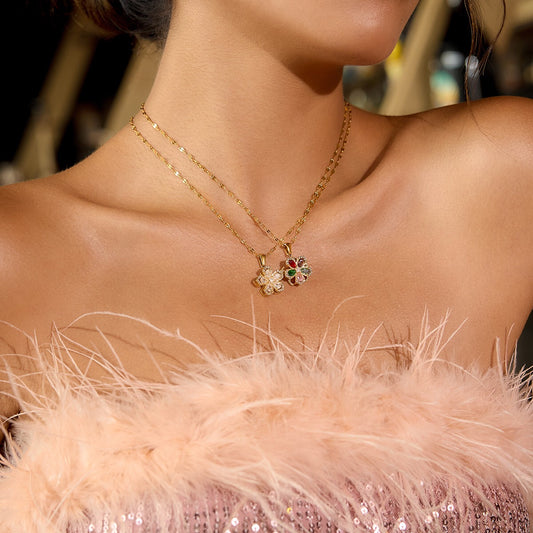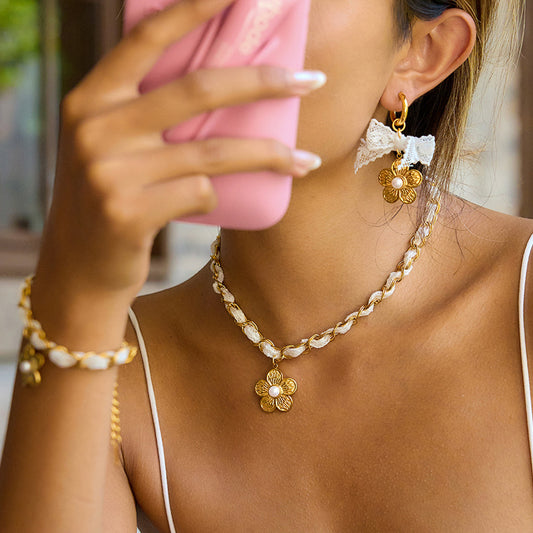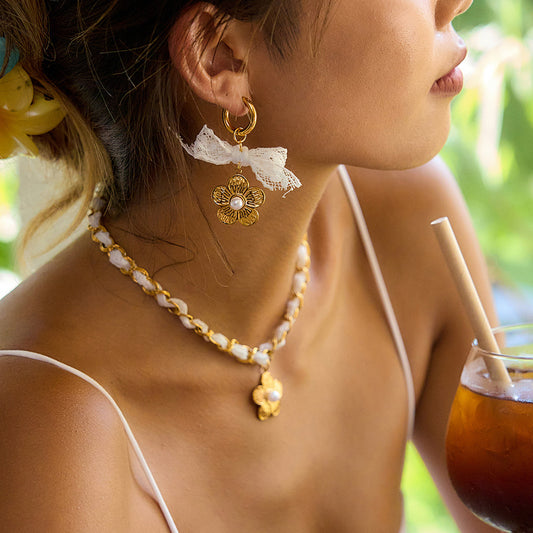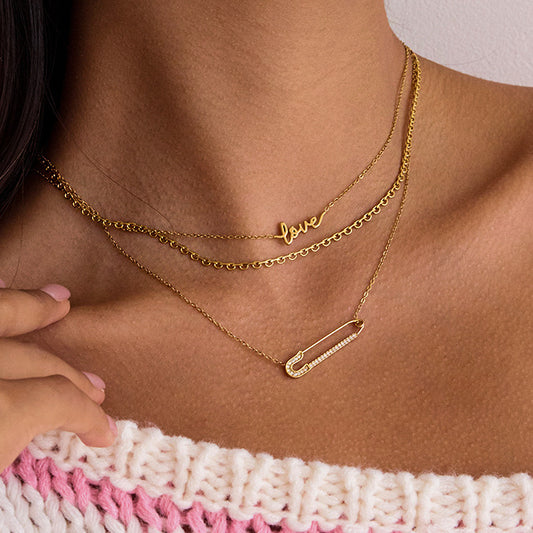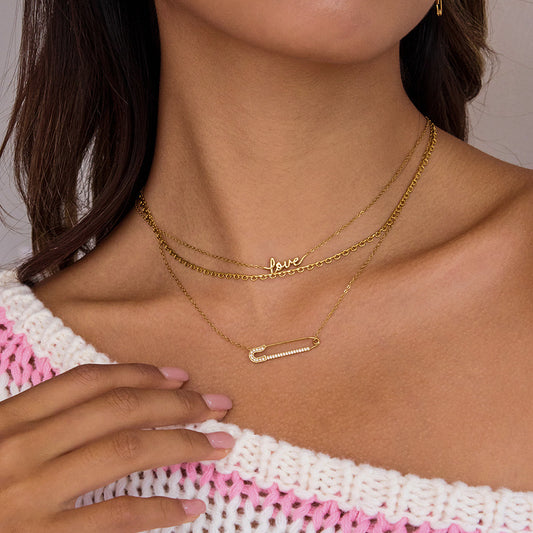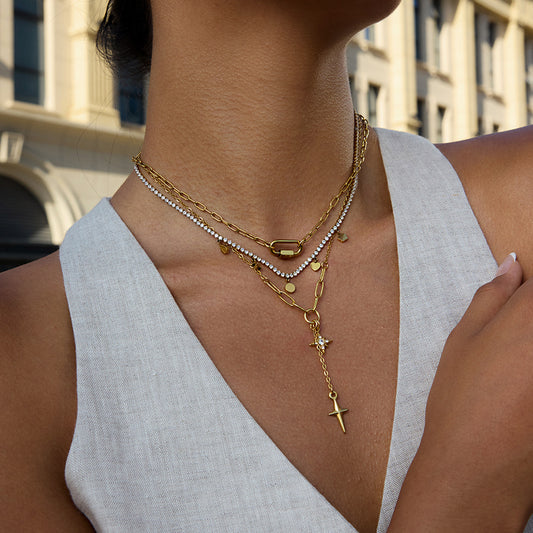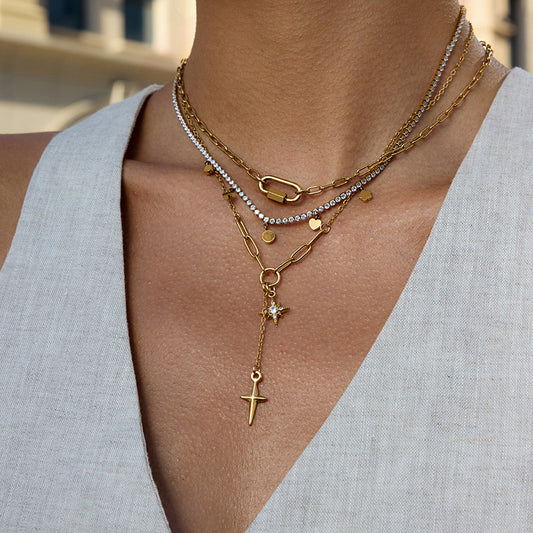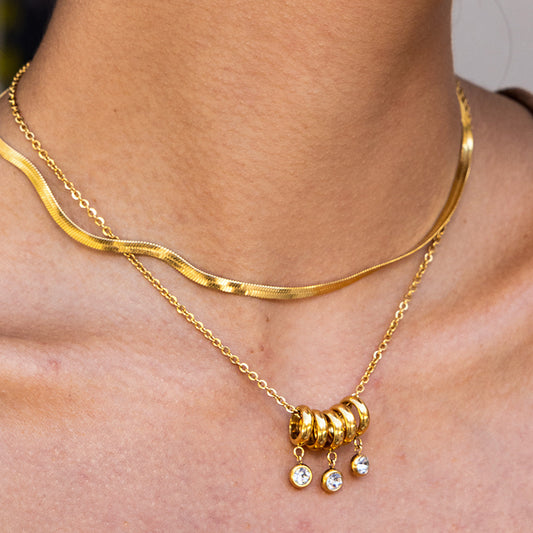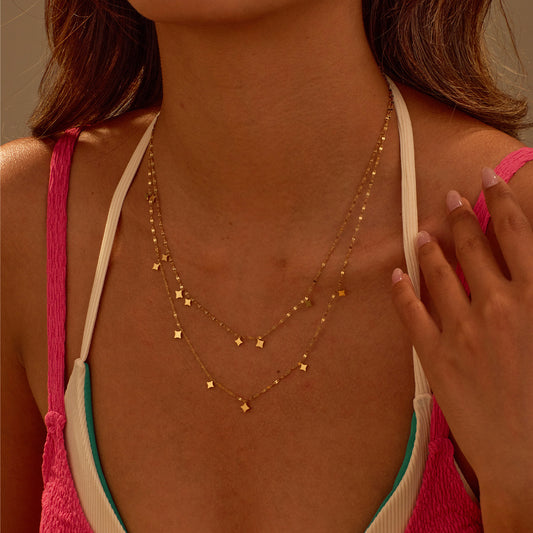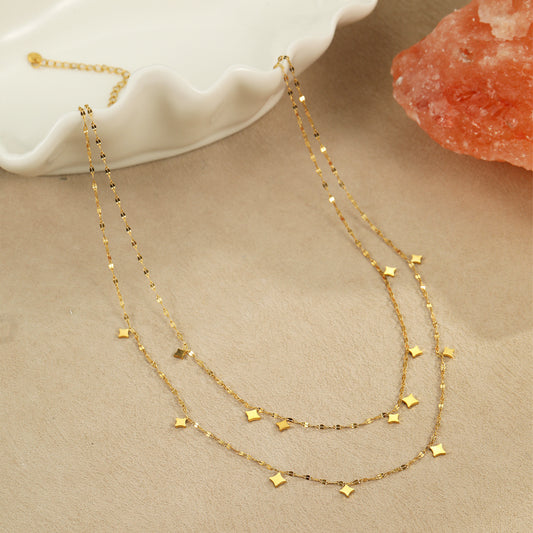The Chain in Necklace is often the unsung hero, providing the foundation and style that elevates a pendant or stands beautifully on its own. While pendants or charms often steal the spotlight, the chain itself plays a crucial role in the overall aesthetic, comfort, and durability of a necklace. In fact, jewelry industry statistics highlight the significance of this category, showing that necklaces represent approximately 27% of total jewelry sales, making them the second-largest product segment in the market. This underscores the widespread appeal and importance of necklaces, where the chain is a fundamental component. Understanding the different types of chains available can help you choose the perfect one to complement your style, a cherished pendant, or for effortless layering.

What is Chain in Necklace
The Foundation of the Necklace
The chain in a necklace is the connected series of links, loops, or plates that form the band worn around the neck. Its primary function is to hold a pendant or simply adorn the neckline as a standalone piece.
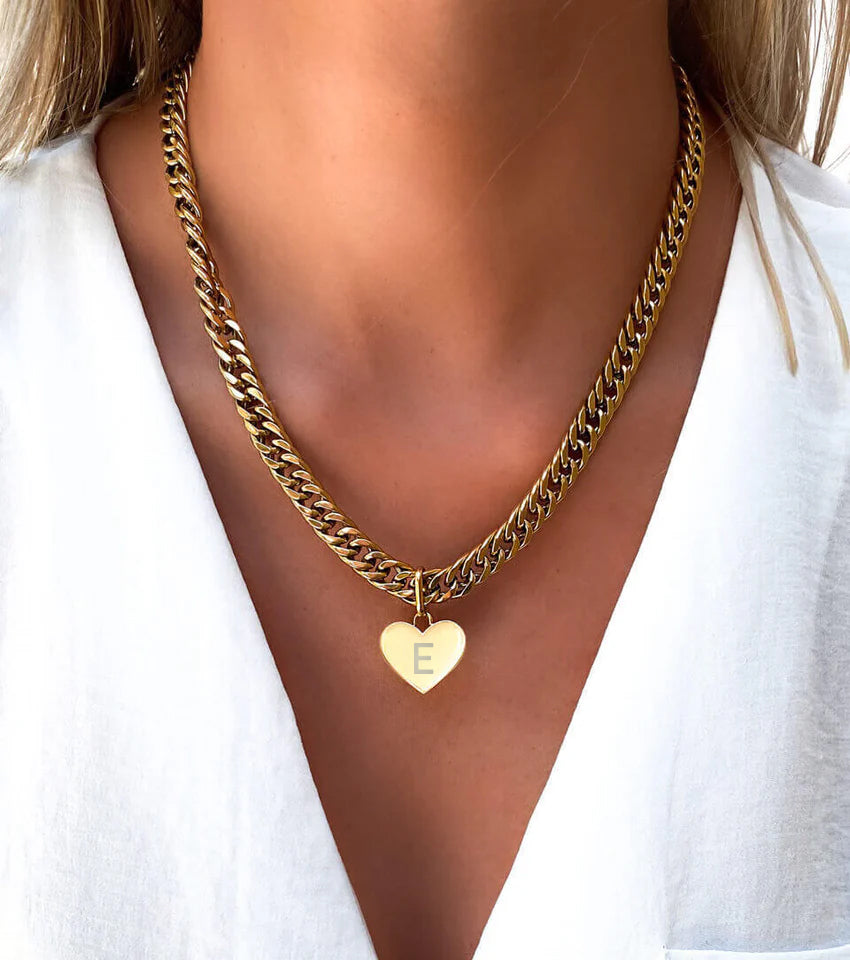
Variety in Construction
Chains are constructed using various methods, with different link shapes and interlocking patterns. This results in a vast array of chain types, each with its own unique appearance, texture, flexibility, and strength. The choice of material, such as gold, silver, or platinum, also contributes to the chain's characteristics.
Why is Chain in Necklace so popular
Versatility in Styling
Chains offer incredible versatility. They can be worn alone for a minimalist look, paired with a pendant to create a focal point, or layered with other chains and necklaces for a trendy, personalized style.
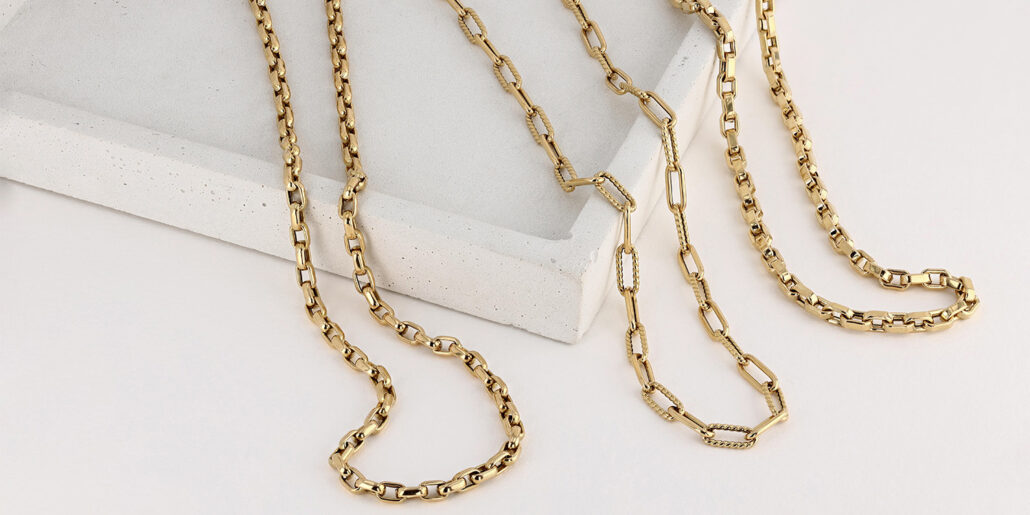
Complementing Pendants
The right chain can significantly enhance the appearance of a pendant. Different chain styles can create varying levels of visual interest and complement the design of the pendant, from delicate chains for subtle charms to more substantial chains for heavier pieces.
Expressing Personal Style
The style of the chain itself contributes to the overall aesthetic of a necklace and can be an expression of personal style. From classic and elegant to bold and modern, there's a chain type to suit every taste.

Popular styles of Chain in Necklace
Cable Chain
One of the most basic and popular types, consisting of interconnected oval or round links. It's simple, durable, and versatile.
Curb Chain
Features interlocking links that lie flat, often with a beveled edge. It's a classic, sturdy chain, popular for both men and women.

Figaro Chain
A variation of the curb chain, with a pattern of typically three shorter links followed by one longer link.
Box Chain
Made of square or box-shaped links that are interconnected, creating a smooth and strong chain.
Snake Chain
Composed of tightly joined plates or bands that form a smooth, flexible tube, resembling a snake's skin.
Rope Chain
Created by linking segments to resemble a rope. It's a strong and visually interesting chain.
Rolo Chain
Similar to the cable chain but with rounder, often thicker links.
Wheat Chain
Made of oval or twisted oval links that are braided together, resembling stalks of wheat. It has a textured and visually appealing look.
How to wear Chain in Necklace
As a Standalone Piece
A well-chosen chain, especially in a visually interesting style or a thicker gauge, can be worn on its own as a simple yet impactful accessory.
Pairing with Pendants
Select a chain that is proportionate to the size and weight of your pendant. A delicate chain is best for small, lightweight pendants, while a sturdier chain is needed for heavier ones. Consider how the chain's style complements the pendant's design.
Layering Necklaces
Mixing and matching different chain styles, lengths, and thicknesses is a popular way to create a layered look. Combine chains with different textures (e.g., a smooth snake chain with a textured rope chain) for added visual interest.
Choosing the Right Length
The length of the chain will determine where the necklace sits on your neckline. Consider the neckline of your outfit and the look you want to achieve when selecting a chain length.
Chain in Necklace: perfect everyday jewelry
Durability for Daily Wear
Many types of necklace chains, particularly those made from durable metals like gold or sterling silver and with sturdy link constructions (like cable, curb, or box chains), are well-suited for everyday wear.
Low Maintenance
Generally, metal chains are relatively easy to care for with simple cleaning, making them practical for daily use.
Effortless Style
A simple chain can add a touch of effortless style to any everyday outfit, providing a subtle gleam or a base for a favorite pendant.
how to clean Chain in Necklace
Basic Cleaning Steps
Regular cleaning helps maintain the shine and prevent buildup on your necklace chain. Fill a bowl with warm water and add a few drops of mild dish soap. Soak the chain for 10-15 minutes.
Gentle Scrubbing
Use a soft brush, such as a soft-bristled toothbrush, to gently scrub the chain, paying attention to the links and any intricate areas where dirt might accumulate.
Rinsing and Drying
Rinse the chain thoroughly under cool running water to remove all soap residue. Carefully pat it dry with a soft, lint-free cloth. Ensure it is completely dry before storing.
Avoiding Harsh Chemicals
Avoid using harsh chemicals, abrasive cleaners, or ultrasonic cleaners on delicate or gemstone-set chains unless specifically recommended, as these can cause damage.
how to keep hair from getting tangled in necklace chain
Choose the Right Chain Style
Some chain styles are more prone to snagging hair than others. Chains with very open links or rough textures might catch hair more easily. Smoother, tighter weaves like snake or box chains can be less likely to tangle.
Consider Hair Length and Texture
Individuals with longer or finer hair may find their hair more prone to getting caught in chains.
Wear Appropriate Necklines
High necklines or collars can help keep hair away from the necklace chain.
Secure Your Hair
Wearing your hair up or in a braid can prevent it from coming into contact with your necklace.
Apply Products Before Donning Jewelry
Apply hairsprays, perfumes, and lotions before putting on your necklace, as these products can make the chain sticky and more likely to snag hair.
how to tie a knot in a chain necklace
Styling with a Knot
Some necklace styles, particularly longer or lariat chains, can be intentionally styled with a knot for a fashionable look. This usually involves creating a simple overhand knot or a slip knot at a desired point on the chain.
Securing or Shortening
In some cases, a temporary knot might be used to shorten a long chain or secure a pendant in place, although this is not ideal for the longevity of the chain and can be difficult to undo.
how to undo knots in necklace chains
Gather Your Tools
You will need a few items: a needle or a pin, a flat surface, good lighting, and possibly some baby oil or powder.
Loosen the Knot
Lay the knotted chain on a flat surface. Use the tip of the needle or pin to gently work into the center of the knot. Try to loosen the coils of the knot by gently pulling and separating the links.
Apply Lubricant (Optional)
For stubborn knots, a tiny drop of baby oil or a sprinkle of baby powder can help lubricate the links and make them easier to separate. Work the lubricant into the knot with your fingers.
Patience is Key
Untangling a knotted chain requires patience. Work slowly and gently to avoid breaking the chain. Continue to use the needle or pin to tease the links apart until the knot loosens enough to be undone.
Frequently asked questions about Chain in Necklace
What is the most durable type of necklace chain?
Generally, solid link chains like curb, Figaro, rope, and box chains are considered quite durable. The durability also depends on the metal type and the gauge (thickness) of the chain.
Can I replace the chain on my pendant?
Yes, you can often replace the chain on a pendant as long as the pendant's bail (the loop that the chain passes through) is large enough to accommodate the new chain.
How do I choose the right chain length?
Consider where you want the pendant or chain to sit on your neckline, your personal style, and the necklines of the clothes you typically wear. Standard lengths for women are often 16-18 inches.
Why do some chains cost more than others of the same metal?
The cost of a chain is influenced by the type of metal, its purity, the weight of the metal used, the complexity of the link design (which affects manufacturing costs), and the brand.
Chain in Necklace: Discover the Foundation of Your Style!
The Chain in Necklace is a vital element that contributes significantly to the look and feel of your jewelry. Understanding the different types of chains and how to wear and care for them allows you to make informed choices that enhance your personal style and ensure your necklaces last. Whether you're selecting a chain for a beloved pendant, building a collection for layering, or simply appreciating the understated elegance of a standalone chain, the right chain is the perfect foundation. Explore the diverse world of necklace chains and find your perfect match today!


